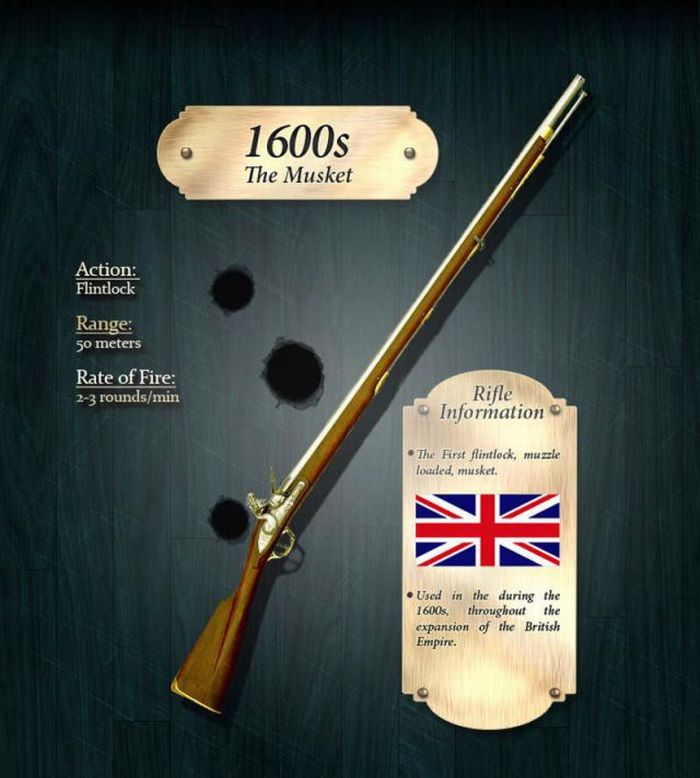|
|
The Evolution Of The Rifle
|
• Barrel wear
As the bullet enters the barrel, it inserts itself into the rifling, a process that gradually wears down the barrel, and also causes the barrel to heat up more rapidly. Therefore, some machine-guns are equipped with quick-change barrels that can be swapped every few thousand rounds, or in earlier designs, were water-cooled. Unlike older carbon steel barrels, which were limited to around 1,000 shots before the extreme heat caused accuracy to fade, modern stainless steel barrels for target rifles are much more resistant to wear, allowing many thousands of rounds to be fired before accuracy drops. (Many shotguns and small arms have chrome-lined barrels to reduce wear and enhance corrosion resistance. This is rare on rifles designed for extreme accuracy, as the plating process is difficult and liable to reduce the effect of the rifling.) Modern ammunition has a hardened lead core with a softer outer cladding or jacket, typically of an alloy of copper and nickel - cupro-nickel. Some ammunition is even coated with molybdenum-disulfide to further reduce internal friction - the so-called 'moly-coated' bullet.
• Rate of fire
Rifles were initially single-shot, muzzle-loading weapons. During the 18th century, breech-loading weapons were designed, which allowed the rifleman to reload while under cover, but defects in manufacturing and the difficulty in forming a reliable gas-tight seal prevented widespread adoption. During the 19th century, multi-shot repeating rifles using lever, pump or linear bolt actions became standard, further increasing the rate of fire and minimizing the fuss involved in loading a firearm. The problem of proper seal creation had been solved with the use of brass cartridge cases, which expanded in an elastic fashion at the point of firing and effectively sealed the breech while the pressure remained high, then relaxed back enough to allow for easy removal. By the end of the 19th century, the leading bolt-action design was that of Paul Mauser, whose action—wedded to a reliable design possessing a five-shot magazine—became a world standard through two world wars and beyond. The Mauser rifle was paralleled by Britain's ten-shot Lee-Enfield and America's 1903 Springfield Rifle models. The American M1903 closely copied Mauser's original design.
|
|









